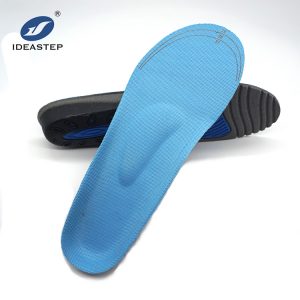
PU (polyurethane) insoles typically offer good breathability. Here are some factors that contribute to the breathability of PU insoles:
- Material: PU insoles are often made with open-cell foam or perforated designs, allowing air to circulate within the insole. This helps to prevent moisture buildup and allows for better breathability.
- Moisture-wicking properties: Many PU insoles are designed with moisture-wicking properties, which help to absorb and dissipate sweat and moisture from the foot. This helps to keep the feet dry and comfortable, reducing the chances of odor or fungal growth.
- Ventilation holes: Some PU insoles feature ventilation holes strategically placed throughout the insole. These holes allow for increased airflow, enhancing breathability and reducing heat buildup.
- Anti-microbial treatments: Certain PU insoles are treated with anti-microbial agents that help to prevent the growth of bacteria and fungi. This not only helps with odor control but also ensures a healthier and more hygienic environment for the feet.
It’s important to note that the breathability of PU insoles can vary depending on the specific design, thickness, and materials used. If breathability is a crucial factor for you, it’s recommended to look for PU insoles that explicitly mention breathability features or consult with a podiatrist or footwear specialist for personalized recommendations.
If you are interested in PU insoles, you can read this page: https://www.aideastep.com/pu-insoles/.
